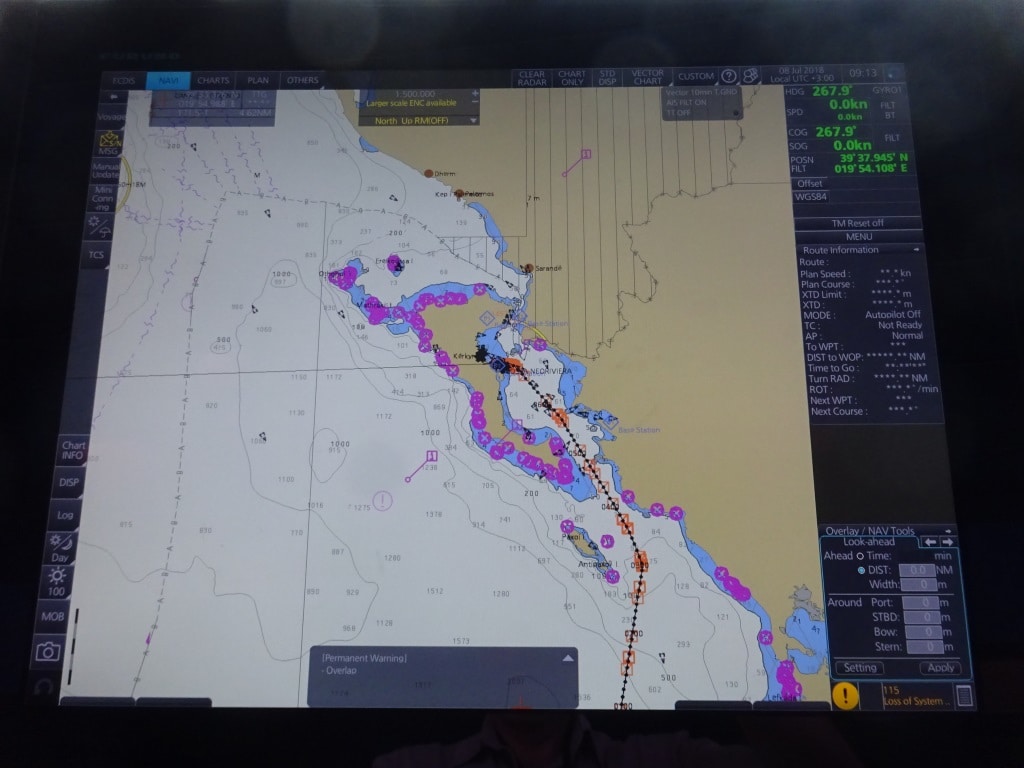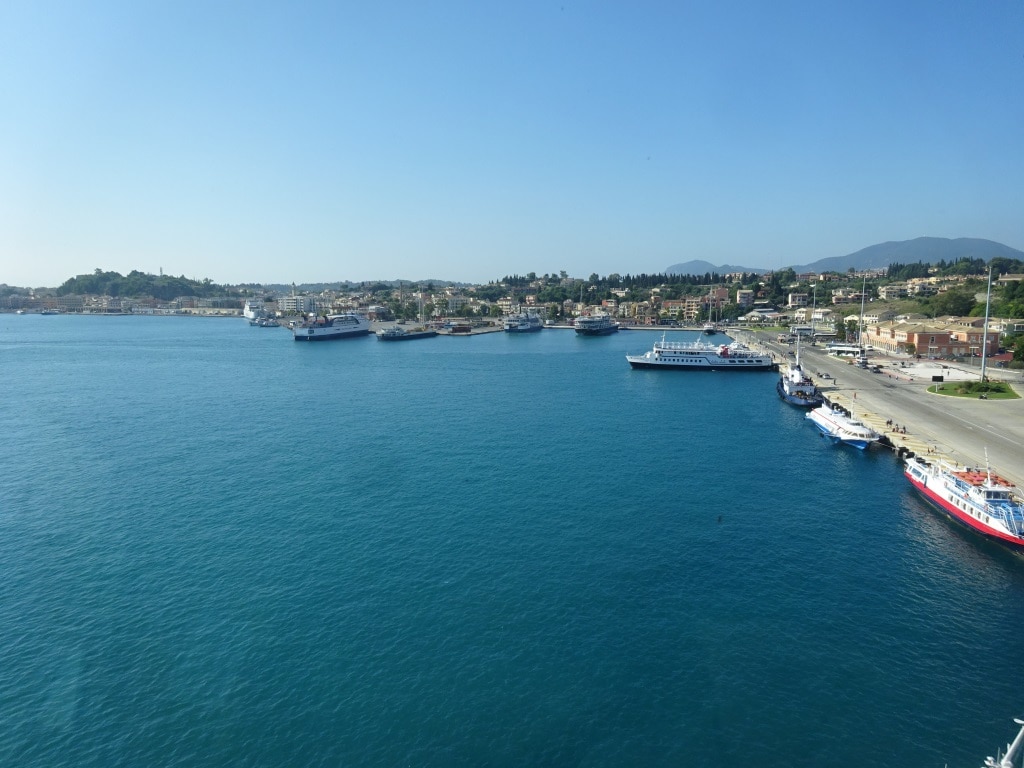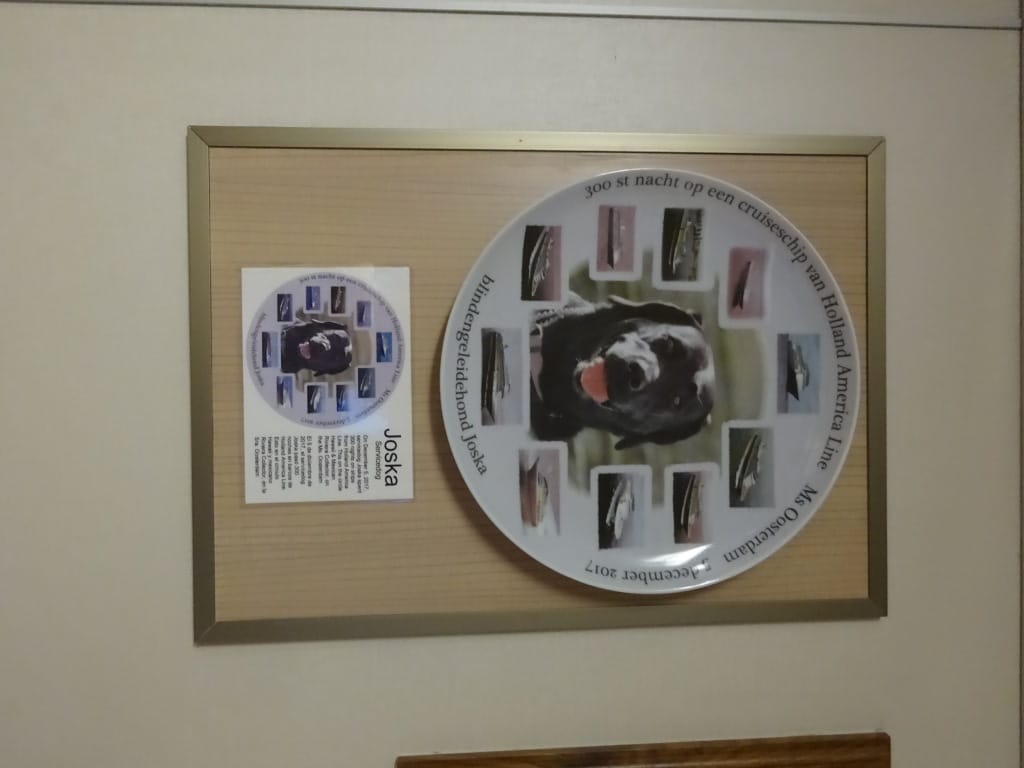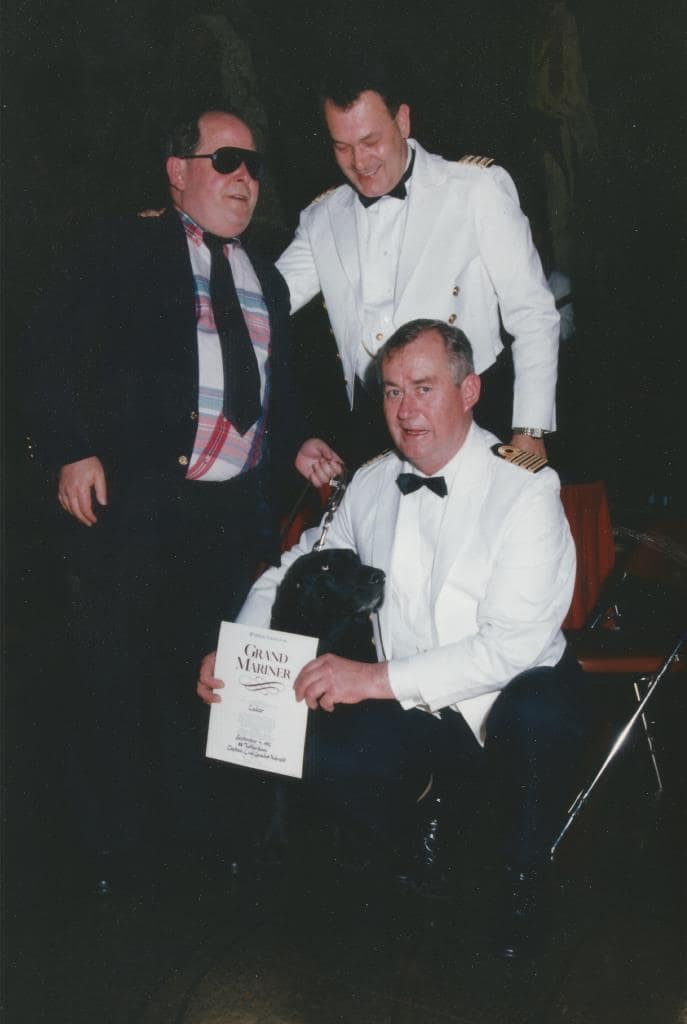Today is our second day at sea and we are now firmly embedded in the Old Bahama Channel between Cuba to the south and the Bahama Bank to the north; and that stopped any swell out there. As a result the ship is now as steady as a rock and we are having a wonderful day at sea. We have a following wind, so there is only a gentle breeze on the deck as the ship is almost traveling at the same speed / velocity that the wind is blowing. Going this way, we have the current with us, as this is the current that will eventually join the Gulf Stream in the Straits of Florida. It is given us a push of about 0.7 knots per hour and that translates roughly in an average of a 0.5 knots all the way from St. Thomas to Ft. Lauderdale. Yesterday when we were in the open there was a lot less water current and early tomorrow morning when entering the Gulf Stream there will be a lot more. But a following current saves speed and thus fuel, so our Chief Engineer is a happy camper. Continue reading
Category: Mariner Society
Today we are sailing at a leisurely pace from Half Moon Cay to Falmouth Jamaica. That is a pace of 14 knots. This is one of those distances which you cannot make in one night because if you would go full speed you would arrive around midnight and Falmouth is not known for its thriving night life so we adjust our speed and have a nice day at sea. Because that is part of the package anyway, a cruise is not just about the ports, but also about the ship. Although those who are new to cruising tend to select a cruise with as many port days as possible. Continue reading
We are sailing back the same way as we went to the East Caribbean, outside the Bahamas, in the North Atlantic Ocean and right inside the Bermuda Triangle. The sea is a bit choppy as Cape Hatteras has yet turned out another 3 day cycle special and this one did not go directly to the North East but more straight across and thus a bit more swell is reaching our area than was the case when we were going southbound. We do not notice it very much but if you pay attention to the movement of the ship it rides as if it is going over a lot of very small bumps. No rolling, no pitching, just little bumps. Courtesy of this wave pattern mixing up with remnants of older wave patterns. Overcast skies and rain showers made for a day that was not “very exciting” outside. But the good news is that, tomorrow is going to be a sunny day again and today was the day to explore the ship as it is the last sea day of this cruise. Continue reading
I always love it when the weather follows the weather forecast as we then do not look so stupid if things do not happen the way we announced it. But it took about an hour to sail clear of Madeira as it is quite a big and long island and then indeed the ship started to move again as predicted. Also as predicted during the course of this morning the seas abated, the wind changed direction and the movement of the ship got less pronounced. By lunch time there was only an occasional twist to remind us that we are still at sea. And even that got less in the course of the afternoon. Now we are looking forward to a number of nice and quiet sea days and our only concern is that in two or three days Cape Hatteras will churn out a new depression and if that happens and it goes a bit to the south then our last day we might see some choppy seas again. On the other hand, most of that day we will be in the lee of the Bahamian Islands so we should be all right. Continue reading
After a very windy departure the ship sailed north along the coast of the Peloponnesus towards the next island in the Ionian Sea, Kerkira. An island that is separated from the big island by a strait which is called the Steno Kerkiras. Kerkira lies on the east side of the island in the sort of curved bay. Thus a sheltered port except when the Etesian winds blow. Today they arrived late and they were not that strong at least when compared with yesterday. The port has a U shaped pier setup with the Left leg and the top part of the U being used by ferries and the outer leg by cruise ships. The docks were constructed sometime in the past and now most docks are either too short or “just fit” for the average size cruise ships of today. We were in port together with the Costa NeoReviera which was originally owned by the now defunct cruise company Festival Cruises.

The approach from the south. Corfu is also North to south located so the predominant wind blows straight down the Steno Kerkiras. the island acts as a funnel and things can become quite unhappy then. Today it was not too bad.
Because the U of the port is quite large there was a shuttle bus running from the port gate to both ships as we were docked all the way at the end of the U. although there is an airport, which sees over 2 ml. guests a year, mainly package holiday tourists, a large number of locals and visitors use the local ferry system to get to the other side or to the other islands. Hence the plethora of ferries, large and small, in the port. Transport with these ferries is fairly cheap and once you have figured out the Greek system of announcing/posting the various routes, and where on the dock the ferry is parked (which sometimes involves quite a lot of asking) you can travel all over Greece with their ferry system, including the islands far off the beaten track.

The ferry part of Kerkira. The 2nd boat on the right is one of the “fast cigars” or hydrofoils. This is a quiet moment as some ferries had already left for their day crossing to somewhere else.
Of all that floats as a ferry, what stands out most among them are the Russian Hydrofoils or “fast cigars” as I heard somebody calling them. For a while they were made in large numbers in Russia and were exported to countries close to the USSR. The Greeks seemed to have liked them a lot for the pure pedestrian traffic as there is no space for anything on board but hand bags and suitcases. They never came much further west than Greece but since some time we have had a few in the Netherlands where they run a Water Taxi system to Rotterdam Central for commuters. They are/were quite popular by those using them but not so much by those around as the wake produced would make the boats and yachts laid up along the route wobble considerably. The plan was to replace them with “less wobbly” options so they might be gone again. But there in Greece they are still everywhere to be seen.

300 days at sea. Not bad for a dog. Many a regular cruiser does not get that high in the HAL Mariner Society.
For those who cruise, know that every ship has a “Wall of Fame” where First Port Call plaques are put on display. Some are a bit naff but some are almost pieces or art and very nice to look at. The Oosterdam has a very usual one; one to commemorate a blind dog who in 2017 reached 300 days with Holland America. And counting as I recently met dog Joska (and the owners attached to it) on the ms Rotterdam in April 2018. Guide and Service Dogs are held in high esteem by us and most Captains recognize them with also issuing a medal for the dog.

The good old days. Captain Leo van Lanschot Hubrecht, Hotel Manager J.J Scheringa, dog and owner, elevated to Grand Mariner. This was before we went to medals with 100, 300, 500 and 700 days.
My records show that (most likely) the first medal/certificate issued to a blind dog was in 1992 on board the ss Rotterdam by Captain Leo van Lanschot Hubrecht. I have kept that tradition going on my ships and as most current captains have sailed with me one time or the other in the past before they became captain, they are now also continuing that tradition. But it is the first time that a HAL ship was offered a Plate to commemorate this event.
We sail from here to Kotor in Montenegro and that brings us back to the Central European Time Zone and thus tonight we go one hour back. Good planning as the sailing into Kotor is very scenic with a very narrow passage before entering a fjord or lake and then nearing the old town of Kotor which lies at the end, partly on the flat, partly against the hill. So guests can have a good nights rest and be up and about early to see the scenery.
Weather for tomorrow: 27oC / 81oF mostly overcast with a chance of showers.
© 2025 – Captain Albert's Website and Blog –
Theme by Anders Noren — Up ↑
